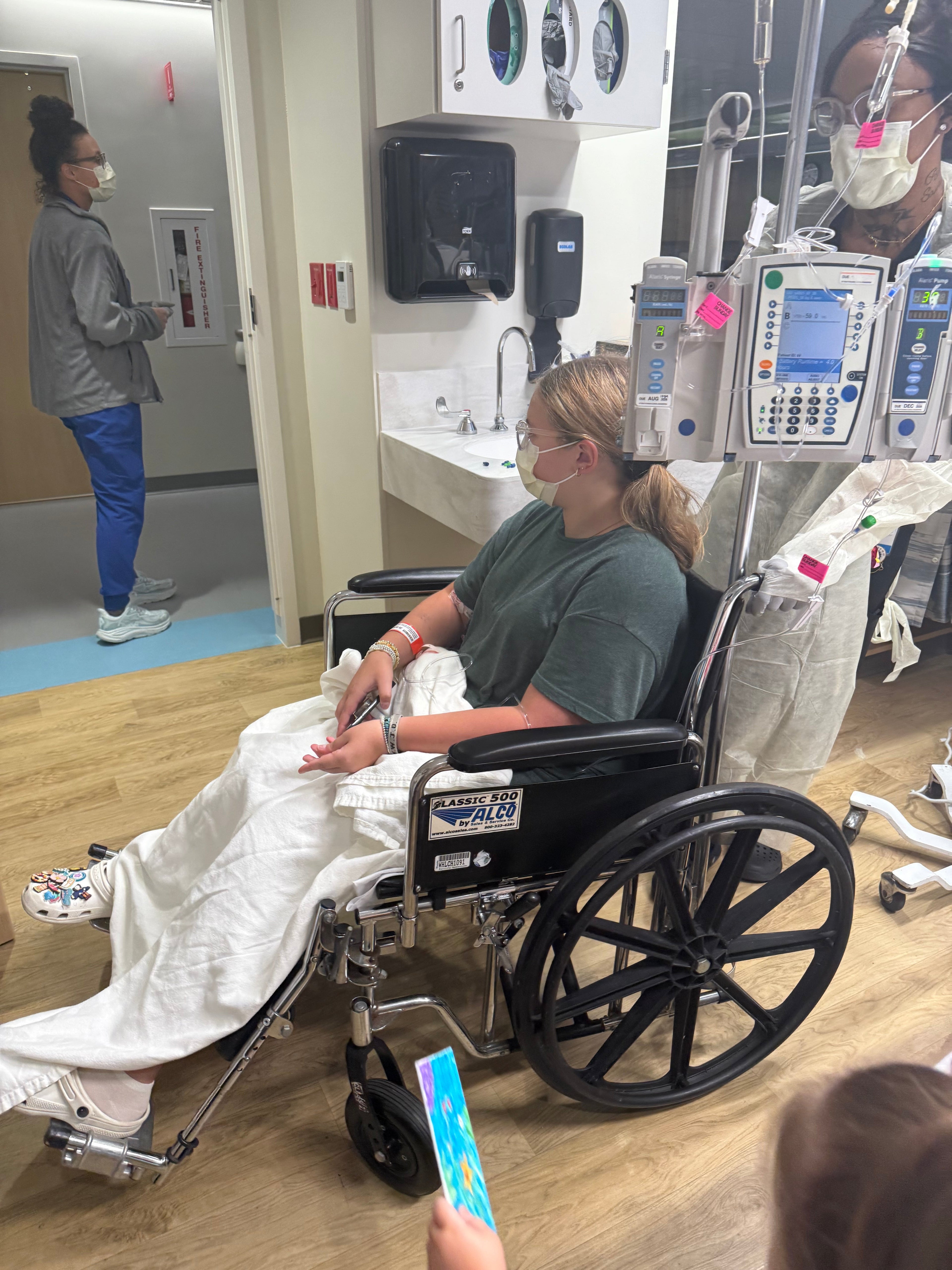I thought I’d heard scary news before. We’ve lived years with Primary Ciliary Dyskinesia (PCD) and atypical cystic fibrosis, so terms like “pseudomonas,” “MSSA”, “cultures,” and “IV antibiotics” are part of our normal.
But nothing prepared me for the day a doctor said:
“The bacteria in her lungs is resistant to every single drug except two… and she’s allergic to one.”
I nodded, then asked the next question — because that’s what moms of medically complex kids do — but inside I was fighting panic.
What happens when your child runs out of antibiotics?
It Started With a Virus… Then Pneumonia
This all began when Jentri caught rhinoenterovirus and developed pneumonia. We admitted her for what we thought would be a “straightforward” course of IV antibiotics — hard, but familiar.
After two weeks, her lungs still sounded awful. The team decided to do a bronchoscopy, and that’s when everything shifted.
The culture came back showing Enterobacter with the NDM resistance gene — a superbug that laughs at almost every drug we have.
🧬 What is NDM Resistance?
For readers who may not know:
- NDM stands for New Delhi Metallo-beta-lactamase. It’s a gene some bacteria carry that makes them resistant to nearly all of our strongest antibiotics — including carbapenems, which are often considered “last resort” drugs.
- Bacteria carrying NDM can spread in hospitals and communities, and they’re very difficult to treat.
- In Jentri’s case, the only two drugs her strain responded to were cefiderocol and amikacin. But she’s allergic to most cephalosporins, which made this even more complicated.
This isn’t just a scary medical term — it’s a global problem. Antibiotic resistance is rising, and kids like Jentri are living proof of why new treatments and research are desperately needed.
Five Days of “Freedom” — Then Straight to the PICU
We were discharged for just five days — long enough to take Jentri to Disney World (in a wheelchair, due to exhaustion but she still had fun” determined to let her feel a little magic before things got harder.
Then the call came: she needed to be directly admitted to the PICU for a drug she’s allergic to — a cephalosporin — because it might be the only option left.
The plan was a 72-hour desensitization process:
- tiny test doses
- constant monitoring
- pre-medication to lower the risk of reaction
- watching every breath and every beep
It was grueling. She was brave. I tried to be.
Back to the Regular Floor — and Weeks of Heavy Treatment
After surviving desensitization, Jentri was moved back to a regular floor but stayed on intense therapy:
- Cefiderocol (IV through a PICC line) — one of the only drugs that can fight NDM Enterobacter.
- Inhaled amikacin — to hit the infection directly in the lungs.
All together, she spent 28 days in the hospital this round.
Twenty-eight days of IV pumps, alarms, vest treatments, nebulizers, pokes, labs, IPV Treatments, culture updates, and exhausted tears.
This stay felt heavier than most — because there’s something terrifying about knowing the usual safety net of “we’ll just try another antibiotic” is gone.
The Emotional Whiplash
Parenting a child with rare lung disease is an emotional rollercoaster:
- You cheer when a PFT climbs even a few points.
- You push back fear when you hear “resistant.”
- You advocate fiercely — Googling studies at midnight, asking about phage therapy when you’re desperate for options.
This stay broke something in me and built something at the same time: fear, yes, but also fight.
Holding Onto Hope — Phage Therapy
Right now, we’re working with her infectious disease team and praying for access to phage therapy — a newer, highly targeted way to fight drug-resistant bacteria using viruses that attack only the bad bugs. It’s complicated, experimental, and hard to access… but it’s hope. And hope matters.
Why I’m Telling This Story
Because if you’re another mom sitting in a hospital room, hearing words you don’t fully understand but know you should fear — you’re not alone.
Because families need to know what antibiotic resistance really looks like.
Because we have to talk about hope and research and the need for better options.
And because my brave girl keeps smiling through treatments that would flatten most adults — and I want the world to know her fight.
To the parents who’ve heard terrifying words in sterile rooms: I see you.
To our friends and family who text, pray, bring coffee, and show up: you are the reason we keep going.
And to Jentri: you are stronger than any bacteria that dares to stay. I love you and I am so proud of you.
-Kursti, Founder of Breath in Bloom Collective




0 comments